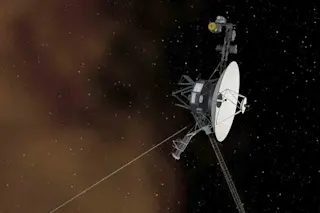When spacecraft fail, they often fail dramatically. But “if the mission survives entry and landing or insertion into orbit, the spacecraft typically lasts two to three times longer than planned,” says Richard Zurek, chief scientist for NASA’s Mars Program Office. Here are some examples of craft that have lived to enjoy missions well beyond their original assignments.
Voyager 1 and 2
Launched in 1977, these spacecraft were originally tasked with flybys of Jupiter and Saturn to snap photos and gather data on temperature and atmosphere composition.
Bonus science: After also taking a good look at Neptune and Uranus, one of them is off to explore interstellar space. Voyager 1 left the solar system in 2012, and Voyager 2 will join it within the next few years.
Why it’s still on the job: NASA can update the software from here on Earth.
Achilles’ heel: The nuclear batteries that they run on ...















